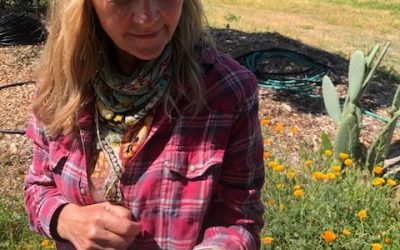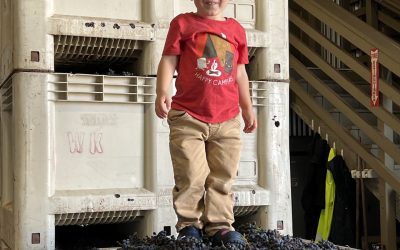Standing out in the middle of a vineyard in Bennett Valley yesterday, it struck me how many times I have been asked, “hey Ken, what are they growing in that vineyard over there?” I almost always have to give the same answer – “almost impossible to say.” This is because in the middle of winter, when all the leaves are gone, or in midseason, when all vines leaves and fruit clusters are green, you have to get right up close to the leaves before you can know whether it is a red or a white grape, let alone figure out the variety. Identifying grape varieties by leaf shape is called ampelography, and even the best growers and winemakers have a hard time distinguishing one variety from another based on leaf shape alone.
But not so when comparing almost any variety of grapevine to rootstock. Most rootstocks have a very unique and different shape from their wine grape variety cousins. And the best way to explain it is in a few simple pictures:
In this image below, it is plainly difficult to discern one vine from another. It may seem hard to accept, but in early July, it would be hard from this angle to know whether this is Cab, Syrah, Pinot, or Chardonnay. In fact, upon closer inspection of the fruit clusters, it is often easier to identify which variety this might be. But again, just walking by, it’s very unlikely even a pro would know unless they are working with prior knowledge, or otherwise with much closer inspection.

Conversely, rootstock looks a LOT different than wine grape leafs. And one glance below makes that quite clear. For those unfamiliar – most (but not all) wine grapevines, such as Cabernet or Chardonnay, are grafted onto rootstock. The rootstock has an entirely different history of parentage, makes very poor wine, but has characteristics that are very desirable, such as high drought tolerance, or vigor in poor shallow soils. Note in the picture below how round and small the leaves are compared to their Pinot Noir cousins next door. These small rootstock shrubs will someday have a wine variety ‘grafted’ onto them, rendering only the roots underground useful and important to the ultimate wine vine:

And here in this closeup, you can plainly see that these leaves really do look much different from their Syrah cousins in the background across the road.

Now compare the above shape, color, and size of the above rootstock leaf with the picture below, and you can now plainly be sure whether you are looking at the leaves of rootstocks or wine grapes!

For more information on this topic, see:
This link to grapevine leaf identification:
https://www.wineaustralia.com/getmedia/21669eff-05de-41d9-9ef8-283b1e01edcb/201008-Vine-identification.pdf
And this link about the parentage and application of grapevine rootstocks:
http://www.wonderfulnurseries.com/resources/rootstock-guide.pdf






0 Comments